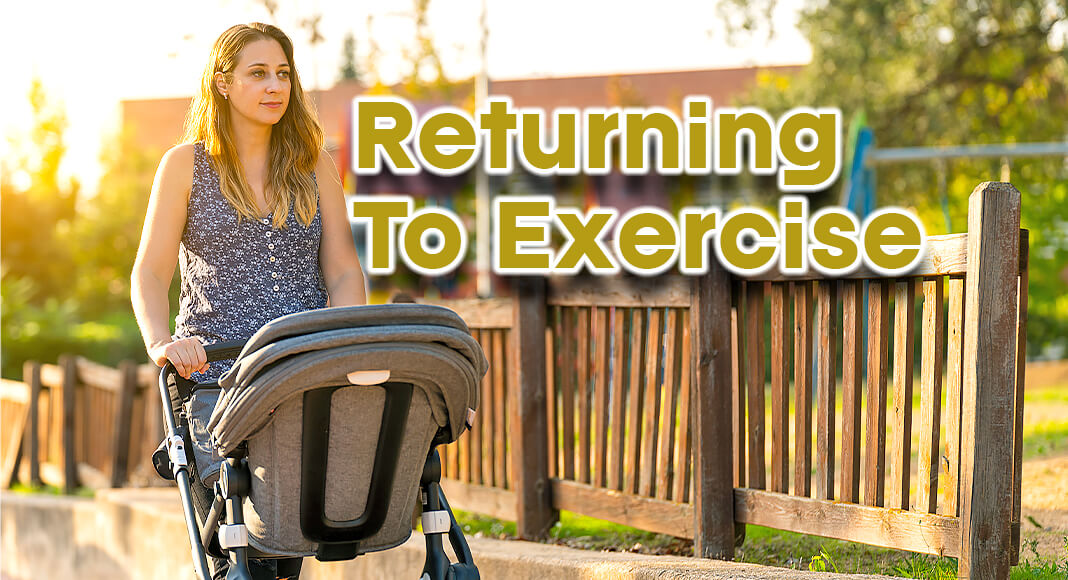
Mega Doctor News
Newswise — After giving birth to her first child, Shefali Christopher, an associate professor in the Doctor of Physical Therapy program at Tufts University School of Medicine, was disheartened at the lack of guidance for new mothers who wanted to return to physical activity. She felt there wasn’t enough research evaluating the safety of postpartum exercise, so she decided to study the question herself.
Now, at Tufts DPT-Seattle, Christopher puts that research to work by advising new mothers about how to return to active, athletic lifestyles safely. Though she often works with elite and professional athletes, she recently shared her advice for anyone returning to sports postpartum.
Take it Slow
As long as your doctor clears you to resume activity, it is safe to exercise postpartum. But the key is to allow time to progress back into activity slowly to avoid pain or injury, said Christopher. It’s good to set goals for your activity, but those goals should be flexible to accommodate for inevitable days of feeling tired or sore.
For example, she recommends that postpartum runners should start with a walking program with a goal of 30 minutes without pain or other symptoms such as incontinence or bleeding. From there, she recommends alternating between running and walking short distances—starting with a quarter mile—for a few weeks, always with the option to walk instead of run if that’s what the body needs.
“If you’ve slept really poorly, and you have a high level of fatigue, or your body just doesn’t feel ready, use those cues to say, ‘Okay, maybe I’ll walk one more day, and not push it today,’” said Christopher.
A new mom’s capabilities also vary depending on their fitness before and during pregnancy. “If you’re a high-level athlete, and you’ve had the ability to exercise up until you had the baby, your body is in a very different shape than someone who had exercise restrictions for six weeks leading up to the delivery,” said Christopher. “How someone returns to activity is very individualized.”
It’s safe to return to any sport, but new mothers may need to strengthen certain sport-specific muscles before diving back into full participation. For example, if cycling is your sport of choice, starting with body-weight exercises to strengthen the legs and glutes will make it easier to tackle longer bike rides a few weeks later, said Christopher. While there are no specific limits to how much effort a postpartum athlete should give, Christopher recommends starting with basics. “If you like lifting, maybe you start doing certain movements with bodyweight, then if that feels good, then you could progress by slowly increasing the weight each week or as your own perceived exertion during the sets decreases,” she said.
Gaining back core strength is especially important for all types of sports, since pregnancy can stretch the muscles inside the abdomen and pelvis. Christopher recommends that postpartum athletes ensure they’re not having any pelvic floor health issues—such as leaking even a few drops of urine or stool, feelings of pressure in the pelvis, or painful bowel movements or sex—before beginning a training program.
Pay Attention to Pain
All pregnancies, and all births, are different, meaning that the journey back to athletics will be different for everyone, too—especially when it comes to pain. It’s important to pay attention to pain when returning to exercise to prevent injury, said Christopher.
Some deliveries may cause tearing of the tissue around the vagina and anus, and Cesarean-section deliveries also result in a surgical wound. Both tearing and a C-section incision will need extra time to heal before returning to intense exercise. Christopher’s research has shown that a vaginal delivery may increase the odds of having running-related pain postpartum. Pain is relatively common among all postpartum athletes. For example, one survey by Christopher showed that almost a third of postpartum runners had pain when running. Christopher attributes this to the lack of research in perinatal athletes as there is minimal guidance on how to return to sport.
It’s important to know that there are many different types of pain, from muscle aches to incision soreness. Some pain stems from muscle weakness, and simple exercises strengthen the muscles and eliminate the pain. If you’ve had the same pain for more than two weeks, said Christopher, it may be time to talk to your care provider. They may suggest you visit a physical therapist who will evaluate the pain and provide ways to relieve it.
Maintain Your Whole Health
Giving birth doesn’t just impact one’s fitness; a new mom’s entire lifestyle and routine may change, as well. These other lifestyle factors can also make a return to sports and exercise more difficult. For example, Christopher’s research shows that getting less than 6.8 hours of sleep and experiencing high levels of fatigue may increase the odds of running-related pain postpartum.
Doing the best you can to sleep, maintaining good nutrition, and staying hydrated can help to ensure a successful return to exercise, said Christopher. Breastfeeding makes proper nutrition and hydration especially important, as well, although breastfeeding was not one of the factors that contributed to higher pain, according to Christopher’s research.
Christopher acknowledges that maintaining one’s health is much easier said than done for new parents. Economic and personal factors, such as the existence of a large, nearby support network or access to childcare, can make getting enough sleep and nutritious meals easier for some new parents than others, she said.
Contact Your Doctor
If you are feeling recurring pain, fatigue, or are simply unsure how to return to your sport, Christopher recommends adding a physical therapist to your care team.
“The lack of research has always brought a lot of fear around what you can and cannot do after giving birth,” said Christopher. “But we want to encourage movement and activity for the well-being of the mom.”










